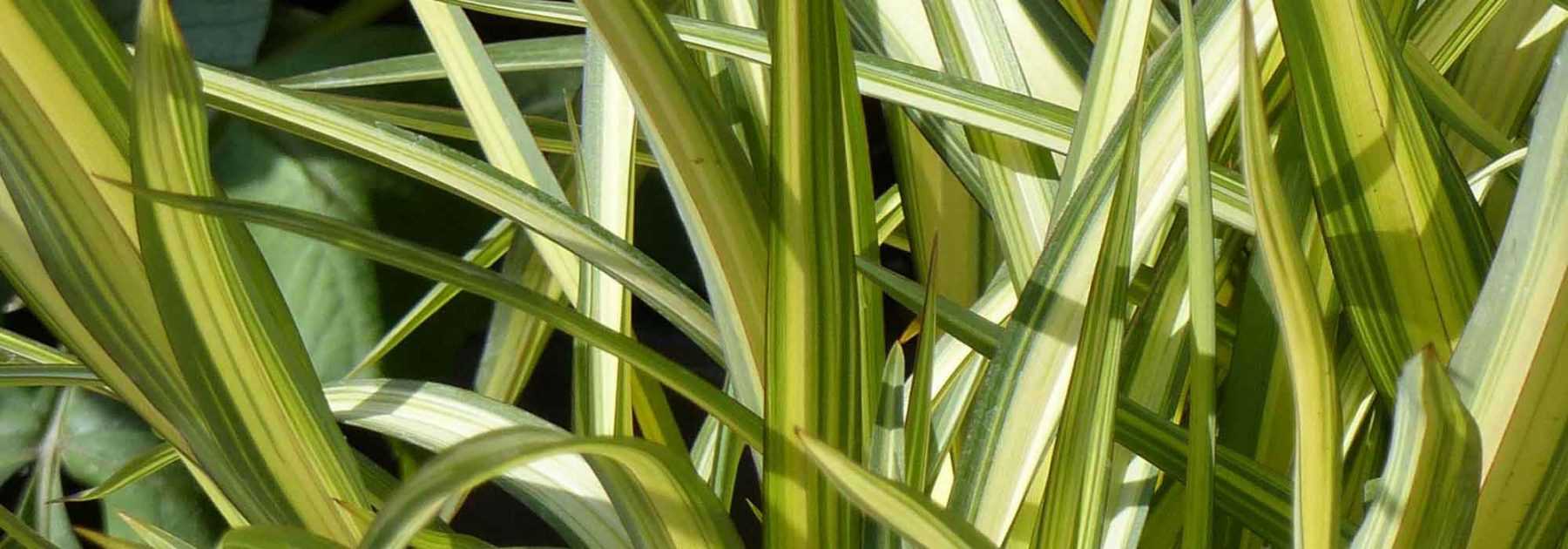
Phormium, New Zealand Flax: Planting, Pruning, Care
Contents
The New Zealand Flax in a few words
- Phormium is a perennial plant with evergreen foliage and a highly exotic appearance
- Hardy down to -8°C, it’s an essential plant for coastal climates
- It grows in large, architectural clumps, either solid-coloured or variegated
- As a structural plant, it defines large coastal borders or extensive rockeries
- Once established in a sunny spot, it requires no maintenance
Our expert's word
Attractive all year round, the Phormium or New Zealand Flax is a stunning evergreen perennial with particularly exotic appeal. Its sword-shaped leaves, reaching skyward, bring an exotic atmosphere to the garden throughout the year—even when the New Zealand Flax is in bloom—a trend that has grown increasingly popular in recent years.
Once confined to coastal borders, this landscape designer’s favourite has become the must-have plant for modern gardens, making it the perfect centrepiece for a large exotic rockery or minimalist, mineral, or contemporary settings.
Whether variegated, purple, or red, whether planted alone or in groups, the Phormium structures space, adding height and an exotic touch to any setting, from lush to understated.
This striking, architectural perennial, though frost-sensitive and best suited to the mild, humid climates of our Atlantic coasts, is ideal for gardens spared from harsh frosts. Elsewhere, it can be grown in a large pot and brought indoors to a conservatory or greenhouse during winter.
Rarely affected by disease and drought-tolerant once established in well-drained, moist, fertile soil, the New Zealand Flax is remarkably low-maintenance. It is also one of the most resilient plants against sea spray, strong winds, and salt.
Does the Phormium tenax have better cold resistance than Phormium cookianum? How should you prune or cut a phormium? Discover all the growing secrets of our New Zealand Flax.
Description and botany
Botanical data
- Latin name Phormium
- Family Agavaceae
- Common name New Zealand Flax
- Flowering July to August
- Height 0.30 to 5 m
- Exposure Sun, partial shade
- Soil type light, sandy, well-drained
- Hardiness -7°C
The Phormium genus includes two species of perennial plants: cookianum or “mountain flax” and Phormium tenax, growing in swampy meadows, riverbanks and rocky cliffs up to 1,500m altitude in New Zealand. While Phormium tenax, the most commonly cultivated species, adapts well to all our regions, Phormium cookianum, accustomed to humid climates, grows naturally along coastal areas on our oceanic shores.
These two species, commonly called “New Zealand Flax”, belong to the Agavaceae family or Phormiaceae family, depending on classification. They have given rise to numerous hybrids and cultivars offering a wide range of colours and variegations or streaks of pink and red, unlike any other plant.
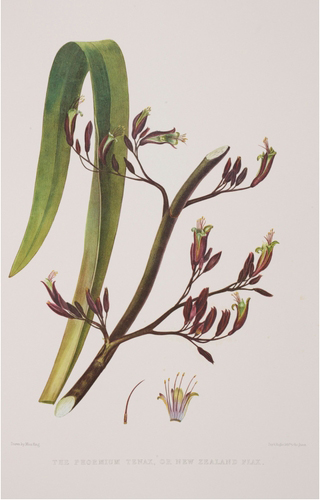
Phormium or New Zealand Flax – Botanical illustration
In its natural habitat, this cousin of agaves can reach over 3 metres in height. In our gardens, its size is more modest.
Both species develop relatively quickly into dense, non-invasive rhizomatous clumps composed of multiple rosettes with both upright and bushy growth. The foliage may be arched or splayed like ornamental grasses, depending on the variety. Their irregular and charmingly anarchic growth causes some young leaves to arch, while older, stiffer leaves grow at right angles. They bend gracefully to form a fountain-like shape in Phormium cookianum.
P. tenax is the largest and most vigorous of the two New Zealand species, typically reaching 2 to 2.50 metres in height and spread at maturity, sometimes more depending on growing conditions. Phormium cookianum (or P.colensoi) has more modest growth, forming smaller clumps of 0.60 to 1.60 metres. Cultivars are generally less vigorous than their parents and offer intermediate sizes.
Naturally slow-growing, over the years the bush thickens thanks to its numerous rhizomes that allow it to spread laterally without becoming invasive.
New Zealand Flax is spectacular for its evergreen foliage with highly graphic appeal, erect like swords pointing skyward. From a cluster of leaves folded at the base and overlapping like a fan emerge large linear leaves, leathery in texture, resembling long satin ribbons of varying flexibility. Ranging from 0.50 cm to 3 m long depending on species, and up to 10 cm wide, they are slightly arched or more rigid, pointed and drooping at the tip. The leaves are somewhat narrower and less upright in Phormium cookianum.
The two species have produced numerous hybrids offering an infinite variety of solid colours, sumptuously variegated or subtly striped with cream, copper, yellow, green, bronzed orange, bluish bronze or purple. Yellow-green in the Golden Ray variety, nearly black in Phormium cookianum Black Adder, orange-pink to purple-pink in ‘Margaret Jones’, apricot-pink edged with olive green to bronze-green in ‘Rainbow Sunrise’, with shades of pink, purple, bronze, brown and ruby red in ‘Pink Panther’, or pale yellow tinged with lime green and streaked with numerous green stripes along their length in ‘Yellow Wave’.
While this perennial astonishes with the luminosity and amplitude of its foliage, its flowering, when it occurs after several years of cultivation, is equally remarkable. It is rare and even scarce in some varieties.
In summer, from May to July depending on climate, long leafless flower spikes appear towering above the foliage clump, sometimes reaching up to 4 metres in height. These small tubular flowers, 2 to 5 cm long, yellowish green or dull red at maturity, composed of six petals, bloom profusely in erect panicles.
Flowering causes the death of the rosette that produced it but generates new offsets.
This highly nectar-rich flowering attracts certain birds and numerous pollinating insects.
It is followed by the formation of spiralling fruits that droop in Phormium cookianum or stand erect in Phormium tenax, as capsules filled with seeds dispersed by wind when mature.

Phormium tenax hybrid, leaves, flowers and seed pods
Beneath its exotic appearance, phormium is hardier than one might think, tolerating temperatures from -7°C to -10°C, sometimes lower depending on growing conditions. Resistant to diseases and pests, it withstands sea spray, pollution, draughts and intense heat without complaint.
This is a very undemanding plant, easy to grow in regions with mild winters. In open ground, it’s best suited to Mediterranean or Atlantic climates depending on the species, where it thrives in full sun, in very well-drained but moist and fertile soil. Elsewhere, cultivation in very large containers to be moved into a conservatory during bad weather is more advisable.
Used as a specimen or planted in groups, phormium structures the space and lends exotic charm to modern gardens as well as more natural settings. This New Zealand native fits into all types of landscapes; its striking graphic appearance is invaluable in contemporary, minimalist designs like gravel gardens or dry gardens. In colder regions, it adds a contemporary touch to terraces and balconies.
The Maori people worked Phormium fibres as we use flax, for making baskets, ropes, mats, clothing… hence its vernacular name “New Zealand Flax” or “Mountain Flax”.
Read also
Cordyline: Planting, Growing and CareSpecies and main varieties
There are primarily two species of phormium, with noticeably different appearances. Most commercially available varieties are hybrids of these species, which come in purple forms like ‘Purpureum’, variegated (‘Golden Ray’, ‘Variegata’, ‘Cream Delight’), or finely striped with pink and red (‘Evening Glow’).
The most common in our gardens is the Phormium tenax, or New Zealand flax, a giant perennial with erect leaves that can reach up to 2–3 metres in height and spread.
The Phormium cookianum, adapted to coastal areas, is more compact, forming smaller clumps, sometimes even dwarf varieties that may not exceed 50 cm. Its leaves arch gracefully, creating a fountain-like effect. It is particularly well-suited for container growing.
There are also intermediate-sized varieties (around 1.2 metres tall), such as Phormium cookianum ‘Tricolor’.
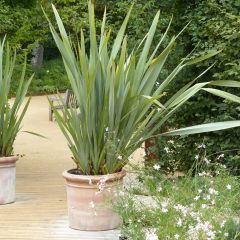
Phormium tenax - New Zealand Flax
- Flowering time July, August
- Height at maturity 2 m
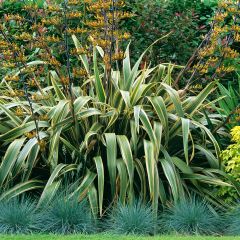
Phormium tenax Variegatum - New Zealand Flax
- Flowering time July, August
- Height at maturity 2,50 m

Phormium cookianum subsp. hookeri Tricolor
- Flowering time July, August
- Height at maturity 1,50 m
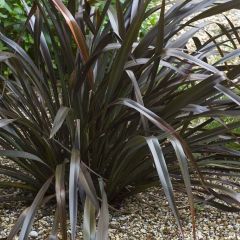
Phormium cookianum Black adder
- Flowering time July, August
- Height at maturity 1,20 m
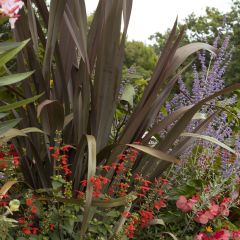
Phormium tenax Purpureum - New Zealand Flax
- Flowering time July, August
- Height at maturity 2,50 m

Phormium cookianum subsp. hookeri Cream Delight
- Flowering time July, August
- Height at maturity 75 cm

Phormium Golden Ray - New Zealand Flax
- Flowering time July, August
- Height at maturity 1,50 m

Phormium tenax Rainbow Sunrise - New Zealand Flax
- Flowering time July to September
- Height at maturity 1 m

Phormium tenax Margaret Jones
- Flowering time July, August
- Height at maturity 90 cm
Discover other Phormium
Planting
Where to Plant New Zealand Flax?
Phormium is a fairly tender perennial, particularly the coloured varieties. Although somewhat frost-sensitive, it can withstand temperatures down to -7°C in the ground, sometimes even lower, with a well-aerated mulch and in dry, well-drained soil. It is slightly less hardy when grown in pots. The most colourful varieties tend to be less robust.
It thrives when planted directly in the ground in regions with mild and short-lived frosts. In our climate, it particularly favours coastal areas, whereas inland, its hardiness is often put to the test. Resistant to wind and salt spray, it is an excellent choice for coastal gardens, making it ideal for seaside planting.
Phormium tenax (and its cultivars), once established, is more drought-resistant and may be better suited to Mediterranean climates, while Phormium cookianum prefers the more humid conditions of the Atlantic coastline, contrary to what is sometimes claimed.
Both varieties prefer a deep soil that remains moist in summer and does not dry out, allowing them to develop into lush clumps.
It cannot withstand severe frosts, which is why in harsher climates, it should be grown in pots and brought indoors for winter. Elsewhere, in milder regions, plant Phormium directly in the ground, in full sun, in loose, preferably sandy, well-drained, deep and fertile soil.
Choose a location that accommodates its expansive growth—after five years, it can easily spread over a metre wide!
Whether planted as a standalone feature or in groups, it adds height and an exotic touch to the garden. It blends perfectly into gravel gardens and dry rockeries, as well as in large, loosely structured perennial borders, where it provides texture and volume.
It also brings an exotic flair to balconies, terraces and urban gardens.
When to Plant Phormium?
The best time to plant New Zealand Flax is in spring, from March to April, or in late summer, from September to October.
How to Plant Phormium?
In rich, well-drained soil, Phormium will grow more vigorously and tolerate frost better. If your soil retains moisture, consider planting your Phormium on a raised mound to prevent waterlogging. However, ensure the plant does not lack water, especially during the first few summers after planting.
In the ground
- Loosen the soil well and dig a hole 2 to 3 times the size of the pot
- Add a generous layer of gravel at the bottom to improve drainage
- Plant the Phormium at the same level as the root ball, in the centre of the hole
- Mix Mediterranean plant compost and regular compost with the excavated soil
- Backfill the hole and lightly firm the soil with your foot
- Mulch around the base and water thoroughly after planting, then once or twice a week during the first growing season
In pots
The growing medium should be rich and very well-draining to ensure good root aeration and prevent waterlogging. Place it in full sun.
- In a large pot (at least 50 cm in diameter), add a thick layer of drainage (gravel or clay pebbles)
- Plant in a mix of potting compost and slightly sandy garden soil, enriched with compost and a handful of ground horn
- Mulch the base
- In summer, water when the growing medium is dry (about once a week)
- Feed with a diluted liquid fertiliser once a month during the growing season
- In colder regions, move the pot to a frost-free location in autumn and reduce watering and feeding—allow the soil to dry out between waterings
→ Learn more in our guide: Growing Phormium in Pots
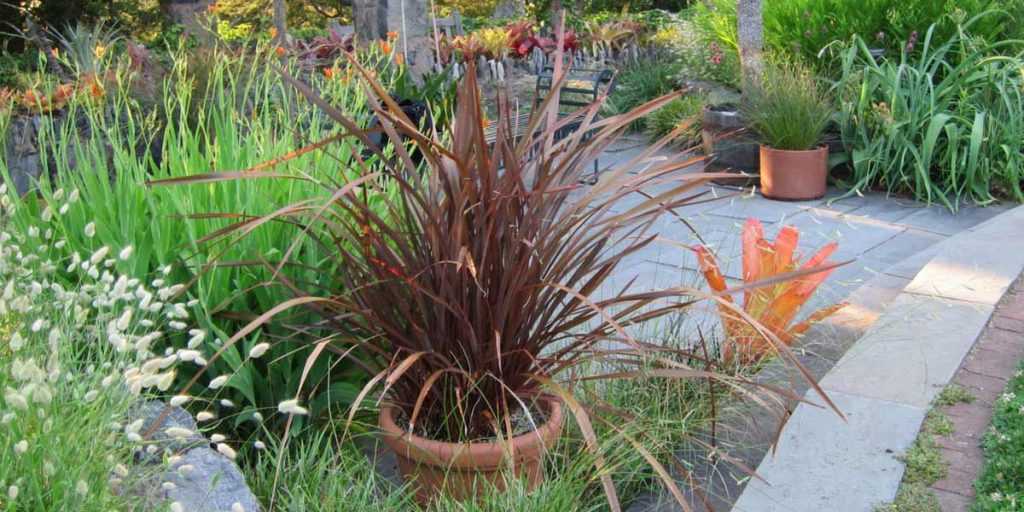
Read also
Agave: Planting, Growing and CaringCare, Pruning and Maintenance
Phormium is easy to grow in regions without severe frost.
In the ground
Protect the base with a thick mulch of gravel or dead leaves to retain soil moisture in summer and shield the roots from cold in winter. In harsh climates, wrap the foliage with winter protection fleece.
For the first two summers, ensure the plant doesn’t lack water and that the soil is never too dry nor waterlogged: the base should remain cool. Once well established in well-draining soil, it will become increasingly drought-resistant.
Thereafter, water every two weeks, no more, and only during prolonged dry spells in southern France. Elsewhere, in wetter regions, water more moderately in summer. In winter, it will make do with rainwater.
When planted in the ground, phormium doesn’t require fertiliser.
In pots
Potted plants are rather demanding and need more attention. Water generously during the growing season: the soil should never dry out completely. Feed the plant with a liquid fertiliser diluted in the watering can once a month.
In winter, reduce watering and fertiliser applications, allowing the soil to dry out between waterings. Repot every 2 years.
How to prune a phormium?
Pruning simply involves a spring clean-up. From March to April, using secateurs, cut spent flower stems back to 20 cm from the ground and remove any withered or damaged leaves at the base.
Read also: Phormium: how to protect it from frost and overwinter it?
Diseases and potential pests
Phormium is remarkably resistant to pests, diseases and atmospheric pollution. However, young plants may occasionally suffer from mealybug infestations, recognisable by the cottony clusters they leave on the plant. These pests slow growth and discolour the foliage. Treat with rapeseed oil sprays, repeating the application two or three times at 15-day intervals.
Propagation
Sowing is possible in February-March, but we recommend collecting young offshoots in autumn more. Dividing a large clump can prove quite challenging, as phormium is particularly tough! Avoid damaging the fragile roots.
- Using a spade, carefully remove young shoots from the periphery (or a nice clump) while avoiding root damage
- Cut the leaves back by half
- Replant the offshoots in individual pots or place the clump directly in the ground in a sufficiently wide and deep hole, enriched with a well-draining mix of compost and gravel
- Backfill, firm down well then water generously and keep the soil moist but not waterlogged until new growth appears
→ Learn more about dividing Phormium in Alexandra’s tutorial!
Pairing Phormium
New Zealand flax with its spectacular ribbon-like leaves in surprising colours ranging from olive green to deep purple, including cream-white, pink or apricot variegations, standing erect like swords, always makes a striking focal point in a garden or in a pot on a balcony or terrace.
Its sharp yet elegant foliage and year-round graphic silhouette lend themselves to multiple uses, always adding character, exoticism and verticality to any setting. It allows for creating original and highly colourful scenes.
An undisputed star of exotic, contemporary or Mediterranean-inspired gardens, phormium fits into all types of gardens, even coastal ones – whether structured, wild or natural – offering relief and grandeur throughout the four seasons.
With their architectural habit, tall phormiums (Phormium tenax ‘Purpureum’, Phormium tenax ‘Variegatum’) are perfectly suited to create a spectacular centrepiece and structure a perennial bed with small shrubs. Used as isolated clumps, they also make highly ornamental ground covers underplanted with carpeting perennials like verbenas, petunias or delospermas.
Easy to combine with each other or with other Asian plants like Japanese grasses, they also appreciate the company of Chinese windmill palms. For a modern bed with exotic flair, surround them with giant cannas, tall dahlias and bulbs of Watsonias, Kniphofias or Crocosmias.
While companion plants may fade with the seasons, the phormium will continue to draw attention with its long, colourful straps.
In naturalistic settings, it creates a stunning effect when mixed with tall ornamental grasses like pennisetums or miscanthus, allowing for magnificent combinations based solely on evergreen foliage contrasts.

A contrasting combination: Phormium tenax variegatum, framed by two Mexican orange blossoms (Aztec Pearl and Sundance) and accompanied by a border of Festuca glauca.
For a contrasting palette, pink and purple varieties (‘Evening Glow’, ‘Margaret Jones’, ‘Pink Panther’) will complement each other beautifully with Leptospermum scoparium ‘Red Damask’ with its long-lasting deep red blooms, a clump of Muhlenbergia capillaris (a true pink cloud in late summer), Melianthus major, Leucadendron ‘Safari Sunset’, Colocasia ‘Sangria’, Lophomyrtus ‘Magic Dragon’, Callistemon or Ricinus communis ‘Carmencita Red’.
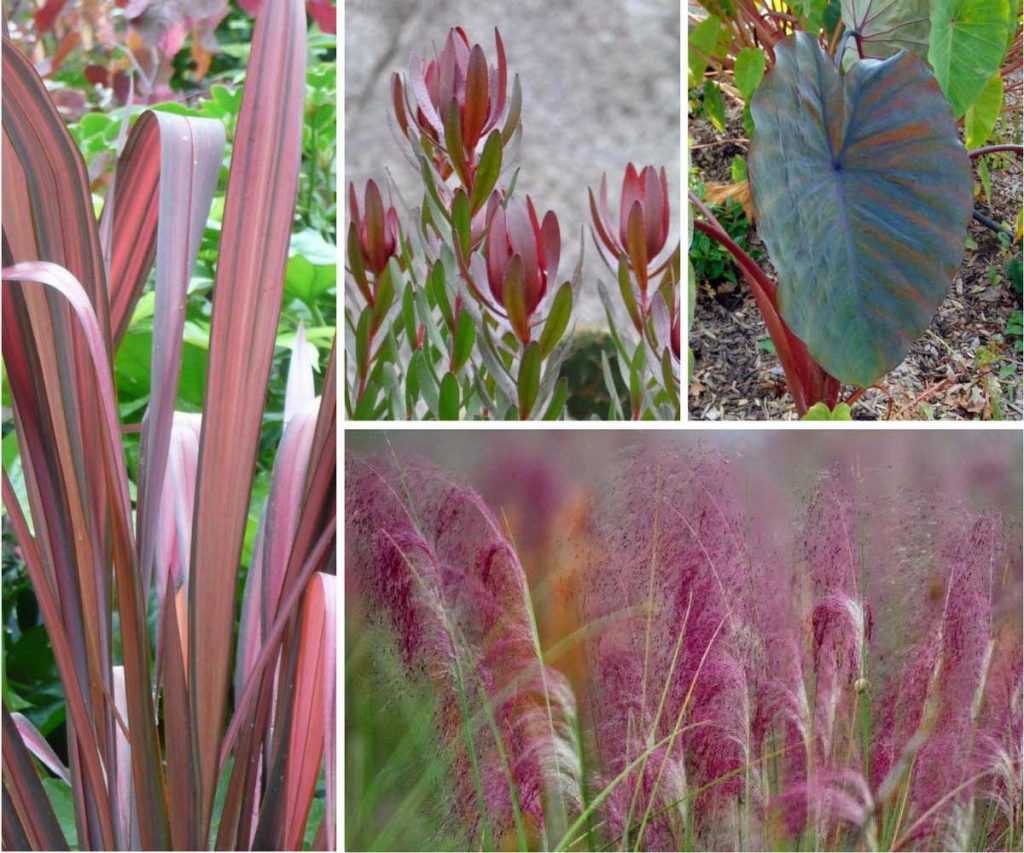
A pink-toned combination: Phormium tenax Evening Glow, Leucadendron Safari Sunset, Colocasia Sangria and Muhlenbergia capillaris
In a modern garden with clean lines, minimalist and stone features like a gravel garden or dry garden, it pairs wonderfully with other equally graphic and easy-care plants like bamboos, cordylines and yuccas in very contemporary compositions. This remarkable plant combines well with the lush foliage of banana plants or the structural architecture of palms, Dasylirion glaucophyllum or agaves.
In a coastal garden, it will be the ideal companion for plants that, like itself, originate from Oceania, such as Pittosporum tenuifolium ‘Tom Thumb’, Pseudopanax ferox or Olearia macrodonta ‘Major’ (New Zealand holly).
In a large container, it creates a sumptuous effect when paired with a carpet of verbenas or combined with pelargoniums, and gives a truly exotic look alongside Trachycarpus wagnerianus or miniature palms.
→ Discover more ideas for combining Phormiums in our advice sheet!
Useful resources
- New Zealand Flax can be sensitive to cold: discover our article on how to choose the right Phormium for your region.
- Our buying guide: How to choose the perfect Phormium?
- Also explore our advice sheet: plants resistant to sea spray
- Our advice sheet: How to grow Phormium in pots
- To care for your Phormium: Diseases and pests affecting Phormium
Frequently asked questions
-
How to prune a phormium?
It's easy! We're talking about a simple spring clean. In March-April, using secateurs, if you've been lucky enough to see your plant flower, prune the faded flower stems to 20 cm from the ground. Cut back any withered or wilted leaves right to the base to aerate the clump and maintain a healthy plant.
-
Why are the leaves of my phormium turning yellow?
The New Zealand Flax thrives in well-drained, even sandy soils. It dislikes waterlogged conditions. If overwatered, its leaves may turn yellow. When planted in the ground, water moderately as excessive moisture can cause the leaves to rot. For potted plants, ensure good drainage (using gravel, clay pebbles etc.) and allow the soil to dry out between waterings.
- Subscribe!
- Contents





































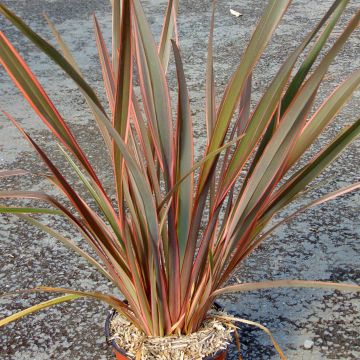
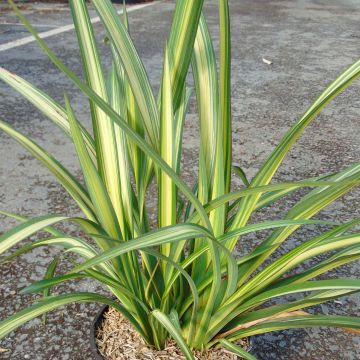
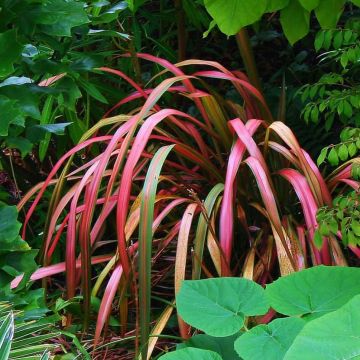
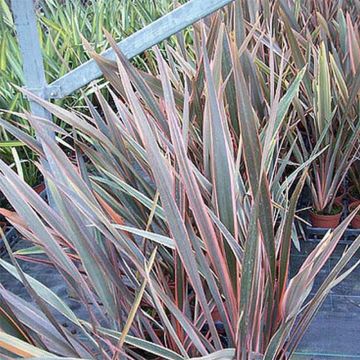
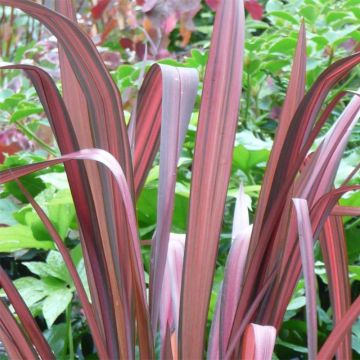
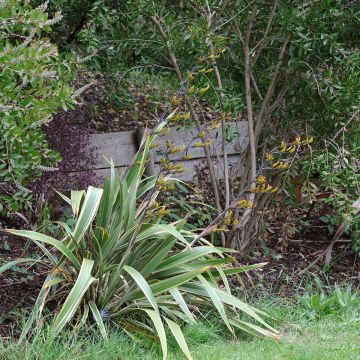
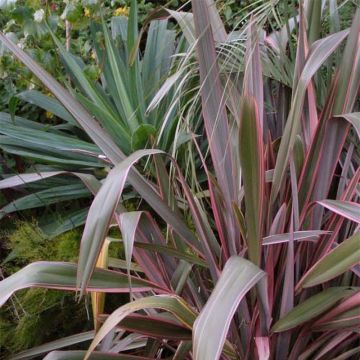
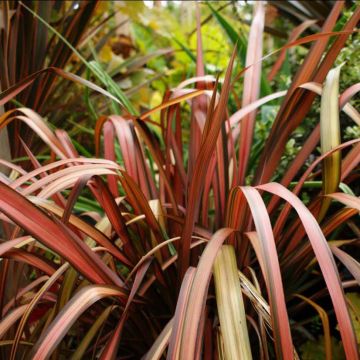
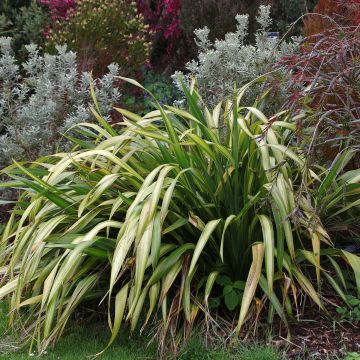
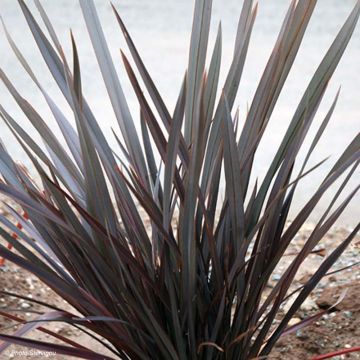
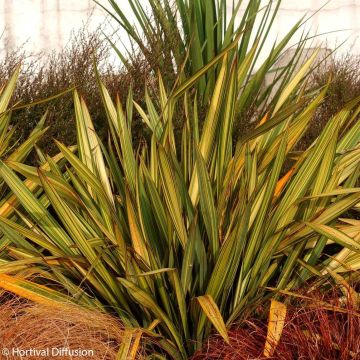
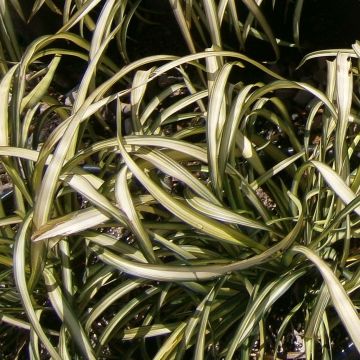
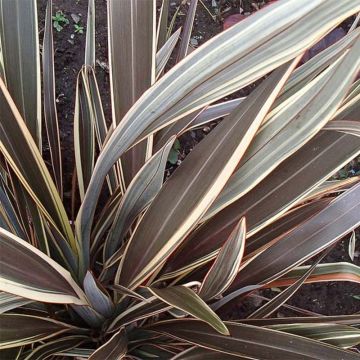
Comments